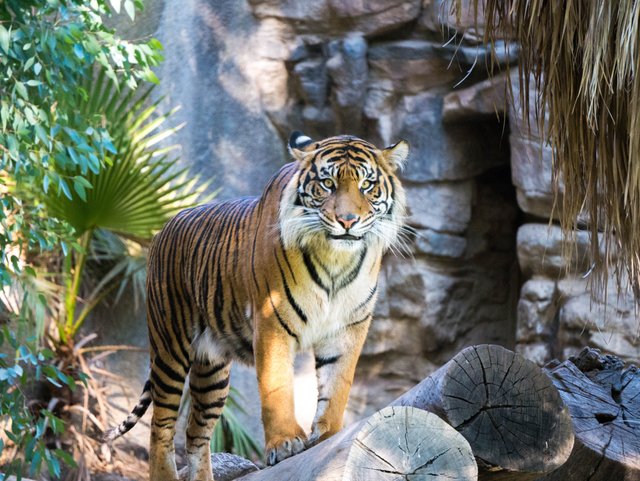
Among the majestic creatures that roam the vast wilderness of Asia, the Bengal tiger stands as an epitome of power, grace, and beauty. Also known as the Indian tiger, it is one of the most iconic and critically endangered big cat species in the world. This article delves into the life, habitat, behavior, and conservation efforts concerning the Bengal tiger, celebrating its role as the pride of the jungle and emphasizing the urgent need to protect this magnificent species.
A Royal Appearance
The Bengal tiger (Panthera tigris tigris) is characterized by its striking coat of orange to reddish-orange fur, adorned with black stripes that are unique to each individual, similar to a human fingerprint. The magnificent coat, combined with its muscular build and imposing presence, has earned it the moniker "The Royal Bengal Tiger." Adult males can weigh between 400 to 570 pounds (180 to 260 kg), while females are generally smaller, weighing around 220 to 350 pounds (100 to 160 kg).
Habitat and Distribution
Historically, Bengal tigers were widely distributed across the Indian subcontinent, including countries like India, Bangladesh, Nepal, Bhutan, and Myanmar. However, due to habitat loss and poaching, their range has significantly diminished, and they are now mainly confined to protected areas and national parks. The Sundarbans, a vast mangrove forest in the delta of the Ganges, Brahmaputra, and Meghna rivers, is one of the last strongholds for the Bengal tiger.
Behavior and Hunting
Bengal tigers are solitary and territorial animals, with each individual occupying a vast home range to ensure sufficient prey and resources. They are primarily nocturnal hunters, using their keen senses of sight, hearing, and smell to track down prey, which can include deer, wild boars, and other ungulates. With their powerful limbs and sharp claws, they are capable of bringing down large animals, making them apex predators in their habitat.
Conservation Challenges
Despite their status as a symbol of strength and pride, Bengal tigers face numerous threats to their survival. The primary challenge is habitat loss due to deforestation, human encroachment, and the conversion of forests into agricultural land. This has led to fragmented populations, making it difficult for tigers to find mates and maintain genetic diversity.
Poaching is another significant concern, driven by illegal demand for tiger parts in traditional medicine and the illegal wildlife trade. Despite international bans on tiger parts, poaching remains a persistent problem, pushing the Bengal tiger closer to the brink of extinction.
Conservation Efforts
Thankfully, conservation efforts are being undertaken to protect the Bengal tiger and its habitat. Governments, wildlife organizations, and local communities are working together to establish and manage protected areas, enforce anti-poaching measures, and implement conservation initiatives that promote coexistence between tigers and local communities.
Community involvement is crucial in securing the tiger's future. Sustainable livelihood programs that provide alternative income sources to local communities can reduce the incentive for illegal activities, such as poaching and encroachment into tiger habitats.
Conclusion
The Bengal tiger, with its regal appearance and commanding presence, plays a vital role in maintaining the ecological balance of its habitat. As an apex predator, it helps control prey populations, ensuring the health and diversity of the ecosystem. However, with the continued threats of habitat loss and poaching, the future of this magnificent species hangs in the balance.
To preserve the Bengal tiger for generations to come, concerted efforts must be made at local, national, and international levels. By protecting its habitat, combating poaching, and engaging with local communities, we can secure the survival of this iconic creature and continue to marvel at its beauty and significance as the pride of the jungle